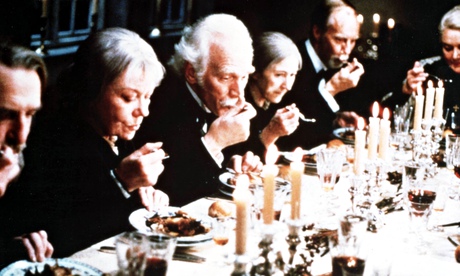
"Just about everyone, lately, seems to want to read about one aspect or another of food," observes the scholar and poet Sandra M Gilbert as she begins her own attempt to feed this literary appetite. Gilbert takes this to the next level: writing about food writing. She surveys how food has been represented in literature, drama, film and food writing throughout western civilisation, mostly in modern times.
Gilbert takes the French writer Jean Anthelme Brillat-Savarin's aphorism: "Tell me what you eat, and I shall tell you what you are" and applies it to how we read and write about what we eat: "Tell me how you envision food in stories and poems, memoirs and biographies, films and pictures and fantasies, and we shall begin to understand how you think about your life."
It's an intriguing premise, but Gilbert doesn't quite deliver on its promise. She gives the reader plenty to chew over but, as that alimentary metaphor suggests, she also leaves it for us to digest the undoubtedly tasty morsels she has gathered. This is more of an opulent all-you-can-think buffet than a meal of courses with a clear beginning, middle and end.
A recurrent theme is how food is seen both as a source of wholesome pleasure and of indulgent sin. Her observations on America suggest that the more puritanical are often making a virtue out of necessity. The first colonists, struggling to eke a living from the land, defined themselves "very self-consciously" against what they considered "the excesses of Old World cuisine". That changed as the 20th century brought unprecedented abundance and now it is Europe that is more likely to look at America as gastronomically excessive.
Another central theme is how food provides a meeting place for the quotidian and the sacred. It is not only in religious ceremonies that food takes on a sacramental nature. There is no greater symbol for life than food itself, which is often treated reverentially. This is a kind of earthy sacredness that bonds us to the immanent earth rather than the transcendent heavens.
Gilbert portrays food as being one of the main ways in which we accommodate ourselves to death. Literature is full of stories of man-eating monsters and cannibals, playing into our primordial fear that we could be eaten just as easily as we eat and that we have to kill if we are to eat. Food is a constant reminder of mortality, no more so than at funeral feasts, where "the pleasures of the table from which the dead are excluded emphasise their absence even while offering signs of life to those who mourn".
How we imagine food is also important for how we think of our place in society. Gilbert recounts how puzzled people were to see MFK Fisher, a woman, dine alone in 1930s America. Her meals out inevitably became a kind of political statement about how women are viewed, with Fisher claiming her self-assurance made women jealous and men angry.
Gilbert also captures the "culinary dislocation" that grips many whose roots lie overseas. Many romanticise their ancestors' cuisine, but on returning to the home country find they don't know what it is. Others turn their back on their grandparents' food in an attempt at assimilation, such as the Japanese-American writer Linda Furiya, who recalls how embarrassed she was that the obento lunches her mother diligently made for her stood out from the packed lunches of her peers.
I would like to have seen Gilbert treat some of her sources with less deference, letting them speak a little less for themselves. She quotes the Russian critic Mikhail Bakhtin saying: "Sadness and food are incompatible (while death and food are perfectly compatible)." It's a pithy remark that grasps at an important truth but doesn't quite get hold of it. As the funeral feasts Gilbert describes attest, sadness and food are compatible. Eating can bring home poignantly the way in which the good things in life are fleeting. In feasting, especially when it centres on traditional foods, "time-bound flesh is redeemed by timeless fleshly delights", as strong a vindication for the pleasures of the table as can be imagined.
Julian Baggini is the author of The Virtues of the Table: How to Eat and Think (Granta). The Culinary Imagination is published by WW Norton (£20). Click here to buy it for £17 with free UK p&p

